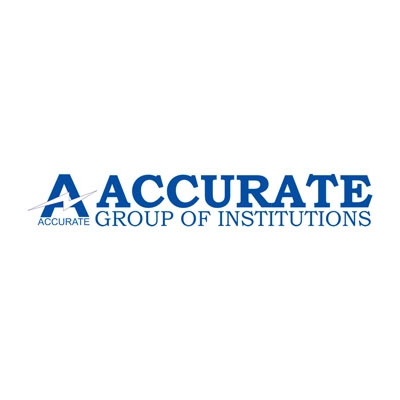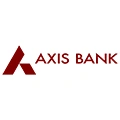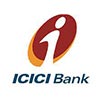Pay After Placement programs are a novel and innovative approach to education, particularly in fields like coding, data science, digital marketing, and other high-demand industries. Unlike traditional education models where students pay tuition fees upfront or take on student loans, PAP programs allow students to start their education without bearing the financial burden immediately.
Under PAP programs, students agree to pay a certain percentage of their future income, typically for a specified period, after they secure a job that meets a predetermined income threshold. The core principle of PAP programs is that students do not have to pay for their education until they find gainful employment.
The primary objectives of Pay After Placement programs are:
Reducing Financial Barriers:
By deferring tuition payments until after securing a job, PAP programs aim to reduce financial barriers that may prevent individuals from pursuing higher education or career-oriented courses.
Aligning Interests:
PAP programs incentivize educational institutions to focus on providing practical skills and relevant knowledge that directly translate into successful job placements. The institutions' revenue is directly tied to the success of their students, creating a mutual interest in their employment outcomes.
Creating Skilled Workforce:

By offering courses designed to meet the demands of the job market, PAP programs strive to create a more skilled and employable workforce.
Promoting Accountability:
PAP programs foster accountability by making educational institutions responsible for their students' employability and career advancement.
How Pay After Placement Programs Work
The process of Pay After Placement programs may vary depending on the educational institution or organization offering them. However, they generally follow a structured approach:
Course Enrolment:
Students interested in a specific course or program enrol in the PAP program. These programs typically offer short-term, intensive courses focused on practical skills and industry-specific knowledge.
Skill Development:
Throughout the course, students acquire practical knowledge and hands-on experience, aimed at preparing them for the job market. These courses often focus on skills that are in high demand, making graduates more marketable to employers.
Job Placement Assistance:

Many PAP programs offer job placement assistance as part of their package. Educational institutions work closely with industry partners to identify potential job opportunities for their graduates.
Securing Employment:
After completing the course, students enter the job market to find relevant employment. In some cases, PAP programs may have specific requirements for the job role or minimum salary level that students need to secure before payment is due.
Income Threshold and Payment:
Once employed, students begin to pay back the tuition fees or a percentage of their income, but only if they meet a certain income threshold. If a student's income falls below the threshold, no payments are required until they earn above that threshold.
Payment Period and Caps:
The payback period typically has a maximum limit or a cap, ensuring that students do not end up paying disproportionately higher amounts than the actual cost of their education. After reaching the cap or completing the payback period, students are no longer obligated to make payments.
Pros of Pay After Placement Programs
Employment Focus:
PAP programs prioritize the employability of their students. Educational institutions offering these programs have a vested interest in their students' success because their revenue is directly tied to the students' future income. As a result, these institutions often provide job placement assistance, career counselling, and networking opportunities to ensure students have a better chance of securing suitable employment.
Strong Incentive for Educational Institutions:
PAP programs create a strong incentive for Educational institutions to focus on the quality of education they provide. Since the institution's revenue is directly linked to the success of their graduates in finding well-paying jobs, they have a vested interest in delivering high-quality education and relevant training.
Financial Flexibility:
Pay After Placement programs offer students greater financial flexibility. They can pursue their education without immediate financial stress and start paying back the tuition fees only when they start earning a certain income. This flexibility allows graduates to better manage their finances during the initial stages of their careers.
Risk Mitigation for Students:
Traditional education often carries a risk, especially if the job market does not have a high demand for graduates in certain fields. In such cases, graduates may struggle to find employment that justifies the cost of their education. PAP programs mitigate this risk by tying the payment to actual employment outcomes.
Encourages Lifelong Learning:
The Pay After Placement model encourages continuous learning and upskilling. Graduates who are aware that they will only need to pay for their education once they secure a job are more likely to invest in additional courses and certifications to enhance their skills and employability throughout their careers.
Creating a Skilled Workforce:
PAP programs focus on providing job-relevant skills and knowledge, which contributes to the creation of a more skilled and competitive workforce. This, in turn, positively impacts economic growth and productivity in various industries.
Cons of Pay After Placement Programs
Limited Availability and Subjects:
Pay After Placement programs are not as widespread as traditional education options, and the range of courses and subjects available under PAP models might be limited.
Higher Cost in the Long Run:
Although PAP programs seem financially advantageous initially, the long-term cost could be higher compared to upfront payments, especially for individuals who secure high-paying jobs shortly after completing the program.
Potential for Exploitation:

Critics argue that PAP programs may exploit vulnerable individuals by tying their future earnings to education costs. If a student faces difficulty in finding a well-paying job, they might still be burdened with financial obligations.
Eligibility Criteria:
PAP programs may have stringent eligibility criteria, limiting access to certain demographics or job seekers with specific qualifications or experience.
Career Dependency:
Since students repay a percentage of their income, they might feel compelled to pursue higher-paying jobs even if they are not passionate about those careers, potentially limiting their career choices.
CONCLUSION:
Pay After Placement programs represent a promising alternative to traditional education models, providing an innovative way to bridge the gap between education and employment. By deferring tuition payments until student’s secure gainful employment, PAP programs reduce financial barriers and align the interests of educational institutions with their students' success.
While PAP programs offer several benefits, such as increased access to education and a focus on skill development, they also face challenges, such as limited availability and the potential for exploitation. As the job market continues to evolve, the concept of Pay After Placement programs may gain further traction and undergo refinements. Policymakers, educational institutions, and students must carefully evaluate the merits and challenges of these programs to determine their suitability in creating a well-equipped and diverse workforce for the future. Ultimately, the success of PAP programs depends on a balanced and transparent approach that benefits both students and Educational institutions alike.












